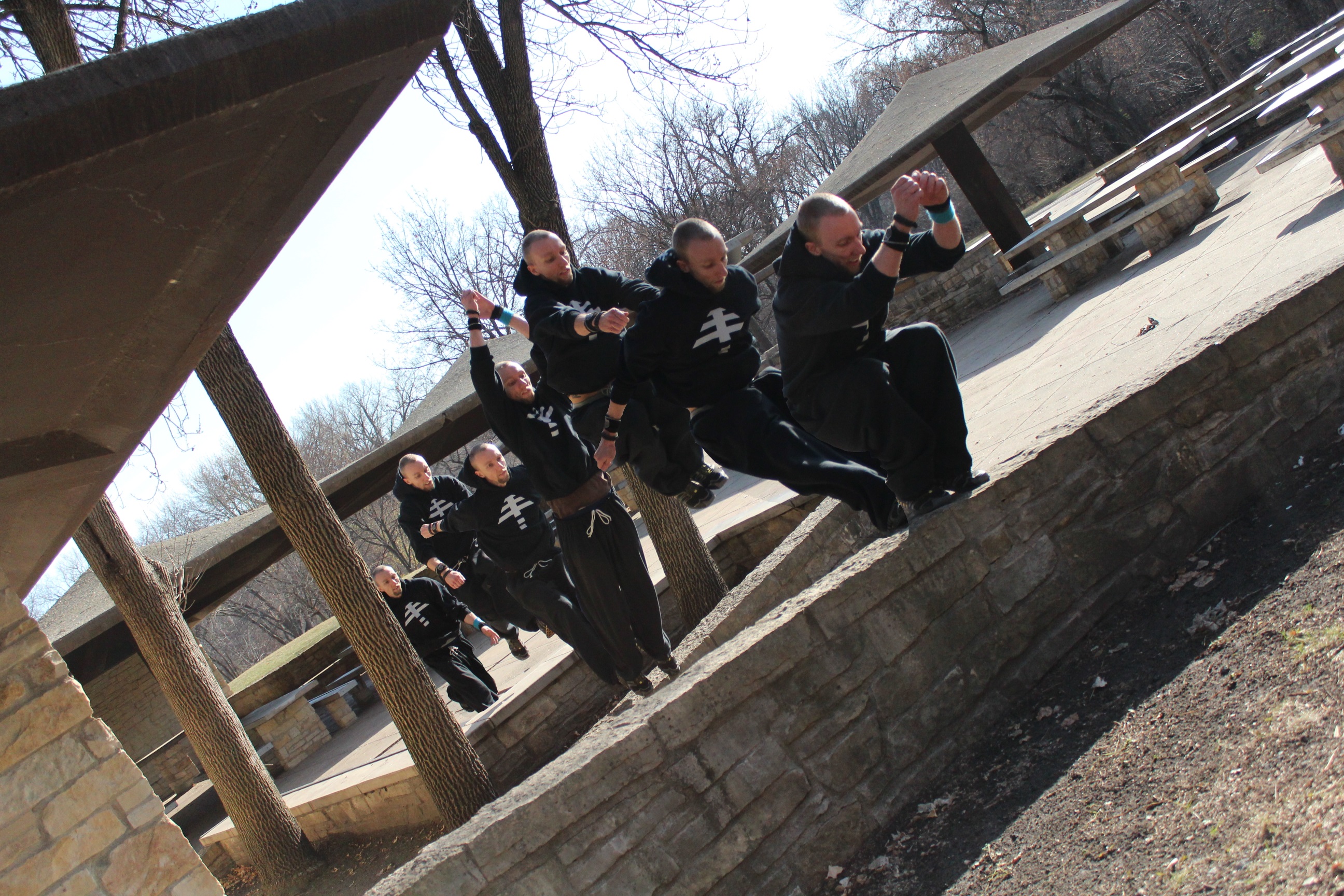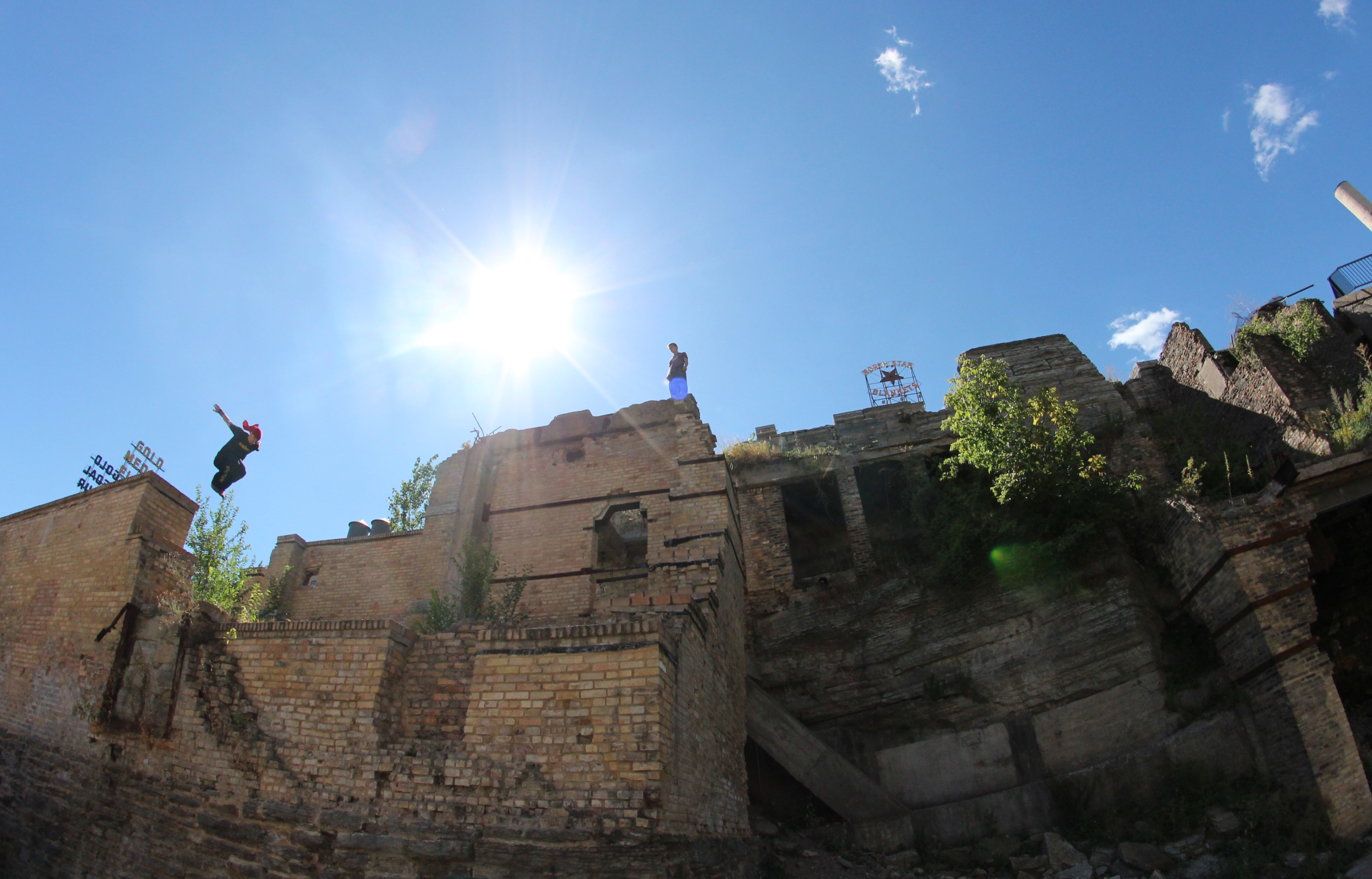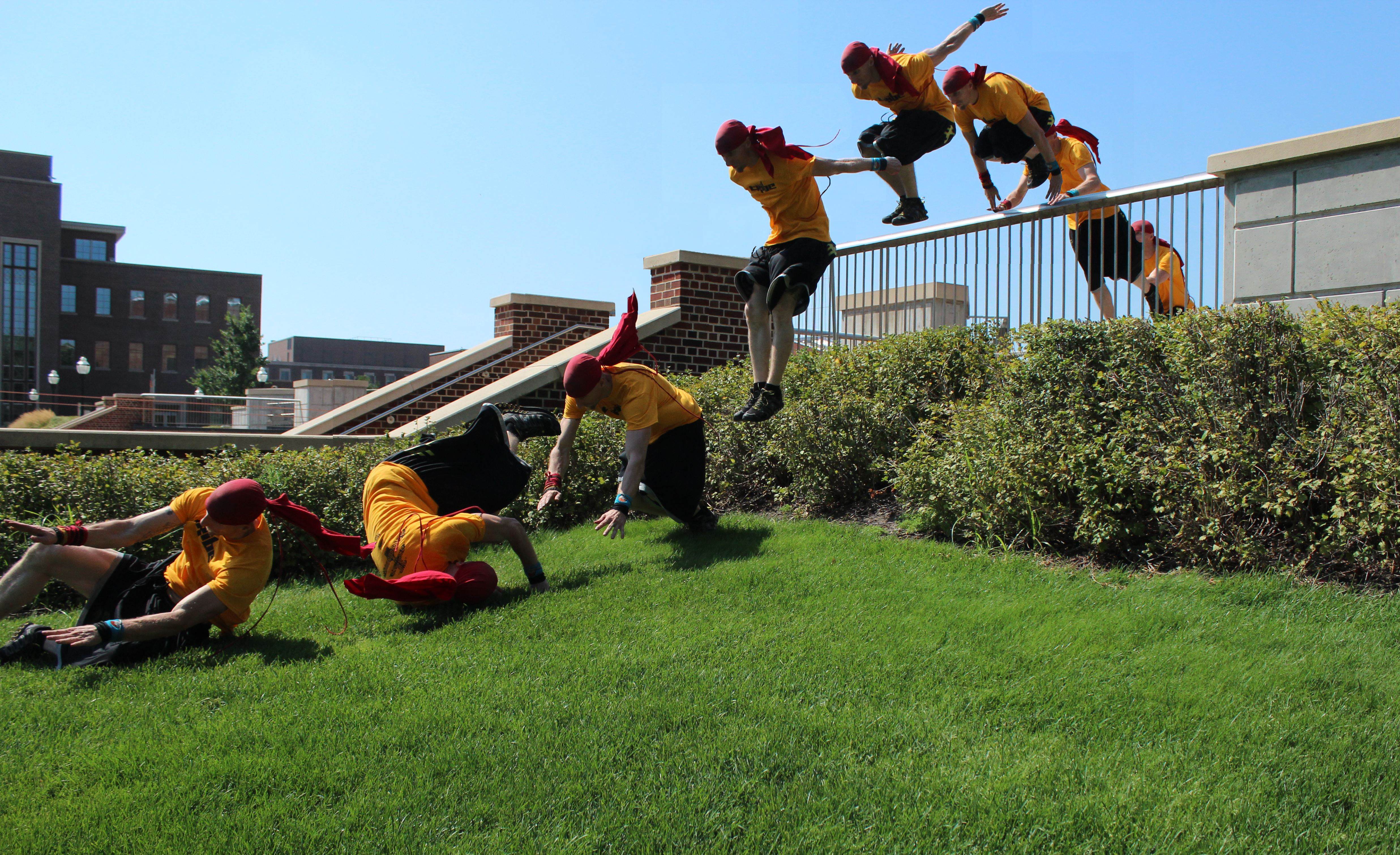The discipline of parkour is not intended in any way to be dangerous. Even the very definition of parkour that many of us use is the fastest, most efficient, and SAFEST way to traverse an environment. However, the typical environments that we train in and some misconceptions about the sport can cause it to be dangerous at times. Hopefully, by reading through this, all practitioners (and especially those just starting out) will be as safe as possible and able to continue training for as long as possible.
Progression
The best way to stay safe while practicing parkour is through proper progression in training. You should always start out with basic moves on the ground and master them before moving on to bigger, more dangerous things. Basically you should do 100 or so proper landings just on the ground before you jump off anything 1 foot tall, then do 100 proper landing offs that 1 foot tall thing before jumping off anything 2 feet tall. Obviously this is a bit of an exaggeration, but the point is, you need to be able to do something small before you can do something big…or you’ll more likely hurt yourself.
One problem with this way to train is that it takes time…and it’s kinda boring at first. Often times people get into parkour because of what they’ve seen in youtube videos and they want to go out and try those things right away. What you haven’t seen is the thousands of hours of training that happened before that youtube video was filmed. Behind every good parkour video out there, there had been years and years of training to make those skills happen. And you will probably have to train for years and years before you can do the things in that video.
For most of us, there is an easy metric to use as for how fast to progress.
Basically, if something look scary, DON’T DO IT! As long as you use a little common sense, it’s not that difficult of a concept. Now this doesn’t mean you need to overcome your fears. This means that literally if there is any small worry in the back of your mind somewhere that you may hurt yourself, you shouldn’t do what you were going to do. If that is the case, you should go back to previous progressions and solidify the skills until you know you can do the next step. For some people (especially young people) this can get into some dangerous territory though. If you are standing on a 20 foot ledge and honestly think to yourself, “PSSSHHH, I’m not scared of nothin!!” before leaping off, this doesn’t mean that you aren’t scared of it…it means you are stupid.
Skills for Safety
As you are first starting your training, there are a few skills that you should specifically work on for a while. These are some of the most important skills that will keep you safe. They are, however, not necessarily the most fun to practice. Everyone wants to get out there and start vaulting over things and doing flips off stuff right away. But without a good training base in these skills, you’re way more likely to get injured doing anything else.
Landings
The first is a good proper landing. Every time you land, your body will be taking some serious forces into itself. If you don’t know how to absorb these forces properly, you will be damaging yourself and possibly even not knowing it. Unfortunately, the ligaments and tendons in your knees, hips, ankles, and spine don’t really have any nerves…so you can’t feel the pain of causing damage to them. The best way we can tell if your landings are good is my listening to them. A good landing is a quiet landing. The more noise you make is a direct indicator to the amount of impact that your body is absorbing. Make sure as you hit the ground, you are using the maximum amount of muscle to slow yourself down to the ground so you don’t just stick it like a gymnast and kill your knees. A good tutorial for proper landing can be found here:
Take Off
Another proper skill that follows a similar path is the take off. Many people learn to take off for their skills from gymnastics punching techniques. The problem with that is that gymnasts are doing it on a spring floor, while you will probably be doing it on concrete. When you attack the ground to take off on a spring floor, the springs absorb and push back the energy you put into it. If you try the same take off on concrete…there is no absorption, and any extra power you get is actually coming from the springiness of your ligaments and not exactly good for them. Again, a proper take off should be QUIET! If you can hear a loud thump as you take off, you are probably causing damage to your knees…and not even getting a better jump for it.
Falling
Inevitably at some point in your training you will probably bail out and fall down. This is why training proper falling techniques is very important. There are many, many types of falling techniques and you’ll have to do some research to learn as many as you can. But often times it’s as important to train what you will do when you fail a technique as it is to train the technique itself. Take a precision for instance, how often do we really train what we will do when a precision jump fails? The more you have trained it, the more likely you are to not get injured if it happens unexpectedly. If you want to get some great training in on falling, you should check out Amos Rendao’s stuff here.
The Roll
Speaking of falling, one of the best techniques to work on for falls is a proper roll. And even when you are not falling, you should still have a great roll for when you get to the point of jumping off taller things and you need to roll out. A good rule I’ve always used is that if you are jumping off anything that is taller than you are, you should definitely roll out. Not that you shouldn’t roll out of smaller jumps, but that’s point that you do NOT want to absorb the impact fully. Rolling should always be practiced on the ground first before you get into jumping off even short things and rolling out. I won’t get too into the technique of the roll as there are hundreds of tutorials on the roll and I could go on forever talking about the technique itself…just go look it up
Conditioning
Finally, sometimes the best way to avoid an injury is simply to have the conditioning to survive a fall or the flexibility to handle a botched landing. Again, there are many guides out there on conditioning for parkour. (A good place to start is APK’s workout of the day. You should do some research and get started on a program that works well for you.
Environmental Dangers
One of the biggest dangers that we face in our training is the environment itself. Many of us do not consider any technique fully mastered until we can do it on concrete. However, concrete is not exactly the best place to learn anything. If you have a chance, you should always practice first on softer surfaces like grass, sand, or even in a gym if you have access to one. If you do train in a gym though, be sure to train as realistically as possible. All true parkour practitioners understand that even when you are landing on a mat, the goal is to eventually be able to land it outside on concrete. You should always supplement your gym training with actual outdoor practice. And when you do take your skills outside, be sure to be aware of weather conditions. It is much more difficult to train in the rain, cold, snow, or dark. But it is also important to be able to move in these conditions as well to be a well rounded athlete. Just make sure to take things slower and be cautious!
Flips
Chances are at some point in your training you will decide that it’s time to try some sort of flipping technique. Not everyone will go this route, but if you do I highly encourage you to find some sort of classes in your area where you can be trained by a professional. Learning to do flips on your own is extremely dangerous. You will probably not learn properly and are much more likely to injure yourself. Find a fully qualified instructor that can help you learn the proper techniques so you can continue training for longer…and learn cooler stuff! Isn’t that what it’s all about in the end anyway?



